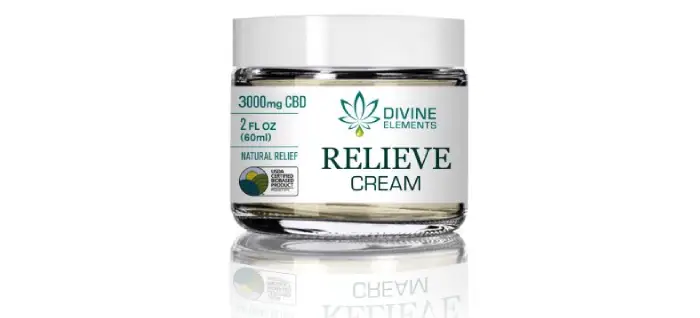Using topical CBD products for pain relief can be quite effective if done correctly. Understanding that CBD, a non-psychoactive compound from cannabis, may help reduce inflammation and alleviate pain is crucial. There are various forms of CBD topicals like creams, balms, gels, and patches. To apply them, first, clean the affected area to ensure better absorption. It’s good to use a generous amount and massage it into the skin gently. While reapplying every few hours can be helpful depending on your pain level, starting with lower dosages is wise. Always consult with a healthcare provider for personalized advice before using new treatments.
1. Understanding CBD and Its Benefits
CBD, or cannabidiol, is a compound derived from the cannabis plant that doesn’t produce a high. Unlike THC, which is known for its psychoactive effects, topical CBD products offer a range of potential benefits without altering your mental state. Research indicates that CBD may help reduce inflammation and alleviate pain, making it particularly appealing for those dealing with chronic pain conditions. Many users report feelings of relaxation and relief, which can enhance overall well-being. For example, someone suffering from arthritis might find that applying CBD topicals helps ease joint pain and stiffness, allowing for improved mobility throughout the day. As interest in natural pain management grows, understanding the benefits of CBD can aid individuals in making informed choices about their health.
2. Forms of Topical CBD Products
Topical CBD products come in various forms, each tailored for different needs and preferences. Creams and lotions are among the most common types, designed for localized pain relief. They are typically lighter and absorb easily into the skin, making them suitable for general discomfort or tension. On the other hand, balms and salves are thicker and provide more intense relief, ideal for targeting specific areas like sore joints or muscles. Gels are another option, often praised for their cooling sensation, which can be particularly soothing for acute pain situations, such as after a workout. For those seeking convenience and longer-lasting effects, CBD patches are available. These adhere to the skin and release a steady amount of CBD over time, making them an excellent choice for chronic pain management. Understanding these different forms can help individuals select the most appropriate product for their specific pain relief needs.
3. Application Guidelines for Topical CBD
To make the most of topical CBD products, start by cleaning the area where you plan to apply the product. This helps ensure that dirt or oils don’t hinder absorption. Once the skin is clean, apply a generous amount of the product. A pea-sized amount typically works well, but you can adjust based on the size of the area in pain. After applying, gently massage the product into the skin. This not only aids absorption but also promotes better blood circulation, which can enhance the overall effectiveness of the CBD.
Reapplication is key, especially if you’re managing persistent pain. You can typically reapply every 4 to 6 hours, but always check the product label for specific instructions. If you’re unsure about how much to use, a good rule of thumb is to start with a smaller amount and gradually increase it until you find what works best for you. Listening to your body and adjusting accordingly is crucial for effective pain management.
4. Dosage Considerations for CBD Use
When using topical CBD products, dosage is an important factor to consider for effective pain relief. It’s advisable to start with a lower dosage, such as a pea-sized amount, and gradually increase as needed. Everyone’s body is different; factors like body weight, metabolism, and the severity of pain can influence how much CBD you may need. For instance, someone with chronic pain might require more product over time compared to someone using it for occasional discomfort.
Consulting with a healthcare provider can provide tailored dosage recommendations, especially if you’re taking other medications. They can help you navigate potential interactions and ensure that you’re using CBD safely. Remember, topical applications can be a bit different than ingestible forms of CBD, as they work locally rather than systemically. Therefore, monitoring your body’s response and adjusting the dosage accordingly is key to finding what works best for you.
5. Timing of Topical CBD Application
When it comes to using topical CBD for pain relief, timing can make a significant difference. For acute pain episodes, such as a sudden injury or flare-up, applying CBD immediately can help manage discomfort effectively. Many users report that using the product right after physical activity or strenuous exercise can prevent soreness and inflammation.
For chronic pain management, incorporating topical CBD into your daily routine may be beneficial. This might mean applying it at the same time each day, such as in the morning or before bedtime, to maintain consistent relief. Some individuals find that using CBD before engaging in activities that typically trigger their pain can help mitigate discomfort throughout the day.
It’s also important to listen to your body. If you notice that your pain increases at certain times, consider adjusting your application schedule accordingly. Finding the best timing for your needs can enhance the overall effectiveness of the product.
6. Additional Tips for Effective Use
Before diving into your CBD regimen, it’s wise to perform a patch test. This involves applying a small amount of the product to a discreet area of skin to ensure you don’t have any adverse reactions, particularly if you have sensitive skin. Storing your CBD topicals properly is also crucial. Keep them in a cool, dry place away from sunlight to maintain their potency. When starting with CBD, consulting with a healthcare provider can provide valuable insights, especially for those with existing health issues or who are pregnant or nursing. Remember, they can help guide you on how to integrate CBD into your current treatment plan safely.
- Start with a patch test to check for skin sensitivity.
- Apply a generous amount to the affected area for optimal absorption.
- Use consistently for best results; regular application may enhance effectiveness.
- Consider incorporating other forms of CBD for a more comprehensive approach.
- Store products in a cool, dry place to maintain their potency.
- Consult with a healthcare professional if unsure about use or dosage.
- Follow the manufacturer’s instructions for specific product guidelines.
7. Potential Side Effects of CBD Topicals
While most people tolerate topical CBD well, some may face skin irritation or allergic reactions. Symptoms like redness, itching, or a rash can occur, especially if the skin is sensitive or if the product contains additional ingredients like menthol or essential oils. If you notice any adverse effects, it’s best to stop using the product immediately. A patch test on a small area of skin before full application can help identify potential allergies. Remember that everyone’s skin reacts differently; what works for one person might not work for another.
8. Legal Considerations for CBD Products
When considering the use of topical CBD products for pain relief, it’s crucial to be aware of the legal landscape surrounding these products. The legality of CBD varies significantly from one region to another. In some areas, CBD derived from hemp is fully legal, provided it contains less than 0.3% THC, the psychoactive compound in cannabis. However, in other places, any form of CBD may still be restricted or illegal.
For instance, in the United States, the 2018 Farm Bill legalized hemp-derived CBD, but individual states have their own regulations that can differ widely. Some states have embraced CBD and its potential benefits, while others have imposed strict restrictions or outright bans. It’s important to research and understand the laws in your specific location before purchasing or using any CBD product.
Additionally, you should ensure that the products you choose comply with local regulations regarding quality and safety. Look for products that provide third-party lab test results, confirming their cannabinoid content and ensuring they are free from harmful contaminants. This not only helps you stay within legal bounds but also ensures that you are using a safe and effective product.
Frequently Asked Questions
1. What are topical CBD products and how do they work for pain relief?
Topical CBD products are lotions, balms, or creams that you apply directly to your skin. They work by interacting with your skin’s receptors, which can help reduce pain and inflammation in that specific area.
2. Can I use topical CBD products on any part of my body?
Yes, you can use topical CBD products on most parts of your body, like your back, joints, or sore muscles. Just make sure to avoid any open wounds or sensitive areas.
3. How long does it take for topical CBD products to start working?
It usually takes about 15 minutes to an hour for topical CBD products to start working. The exact time can vary based on the product and the area of application.
4. Are there any side effects from using topical CBD products?
Topical CBD products are generally safe and well-tolerated, but some people may experience mild skin irritation or allergic reactions. It’s a good idea to do a patch test first.
5. How should I apply topical CBD products for the best results?
To get the best results, apply a generous amount of the product to the affected area and massage it into your skin. You can reapply it a few times a day as needed.
TL;DR Topical CBD products, derived from the cannabis plant, can aid in pain relief by reducing inflammation and promoting relaxation. Available in forms like creams, balms, gels, and patches, these products should be applied generously to clean skin, massaged in, and reapplied as needed. Start with a lower dosage and consult a healthcare provider for tailored advice. Use them during pain flare-ups or regularly for chronic conditions, ensuring to check for any allergic reactions and adhere to legal guidelines in your area.




